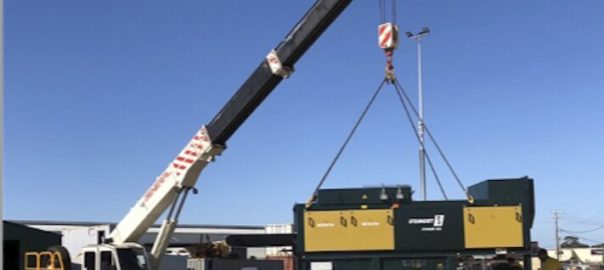Novo Resources has advised that Phase 2 mechanical sorting trials of its Pilbara deposit bulk samples will commence from early December 2021 following the dispatch of a Steinert KSS 100F LIXT fine mechanical sorting unit, due to be commissioned at its operation in Western Australia over the next few weeks.
The sorter will be installed adjacent to the company’s Golden Eagle processing facility in Nullagine.
Fifty samples from four different deposits across the Pilbara, ranging in size from 800 kg to approximately five tonnes, will be crushed and screened into three size fractions prior to testing through the sorter. The bulk samples will be processed by the sorter to produce a concentrate for gold assay.
Once this second phase of testing is complete, expected around the June quarter of 2022, the next phase of the test work will involve relocating the sorter to the company’ Comet Well project in Karratha, Western Australia, and commencing proposed large-scale bulk sample sorting test work of 20,000 t, leading to potential commercialisation of mechanical sorting for Pilbara conglomerates, Novo said.
The sorter infrastructure, designed and constructed by OPS Screening and Crushing Equipment, is a fully modular and containerised turnkey plant deployable to any of Novo’s tenements in the future for test work and potential large bulk sampling and processing, according to Novo. The sorter includes feed and product transfer conveyors, allowing the sorter to produce gold-bearing concentrates in a single pass for further upgrading or downstream processing.
This trial of the sorter within the Golden Eagle processing facility area is a culmination of several years of test work conducted by Novo to determine the amenability of mechanical sorting to its 13,250 sq.km of tenements across Western Australia.
“Mechanical sensor-based sorting utilises X-ray technology, 3D colour laser and metal induction to identify gold-bearing material,” Novo said. “A high-pressure air jet ‘shoots’ these gold-bearing particles into a collection system to produce a concentrate for further downstream processing.”
Rob Humphryson, CEO and a Director of Novo, said: “Mobilising the mechanical sorter for Phase 2 field trials represents an important step in progressing this innovative technology. We are looking forward to observing sorter performance from field samples collected at Comet Well, Purdy’s Reward, Talga Talga and Egina ahead of larger-scale field trials at Comet Well and Purdy’s Reward scheduled for Q2 (June quarter) 2022.”








